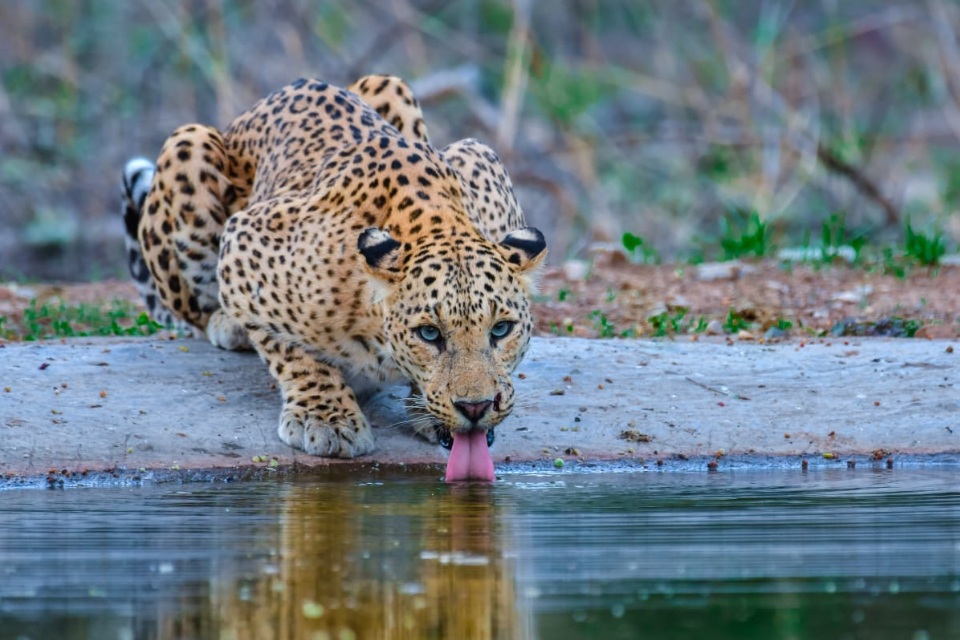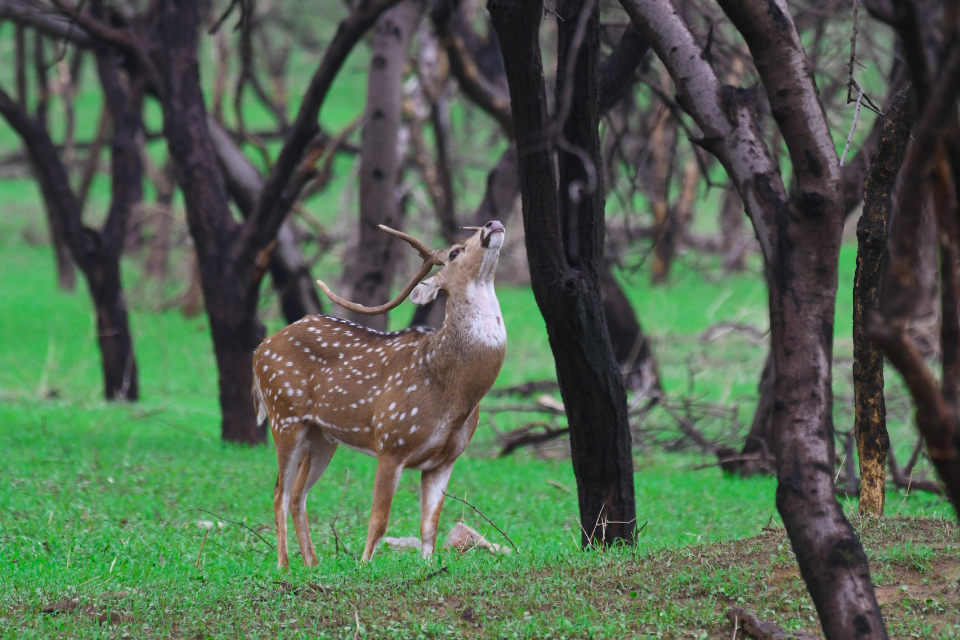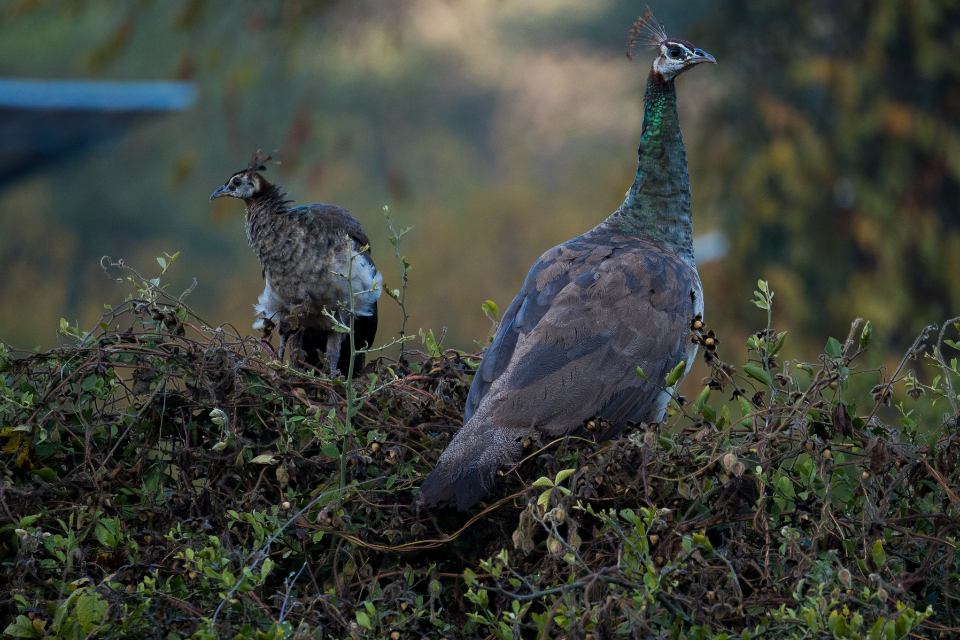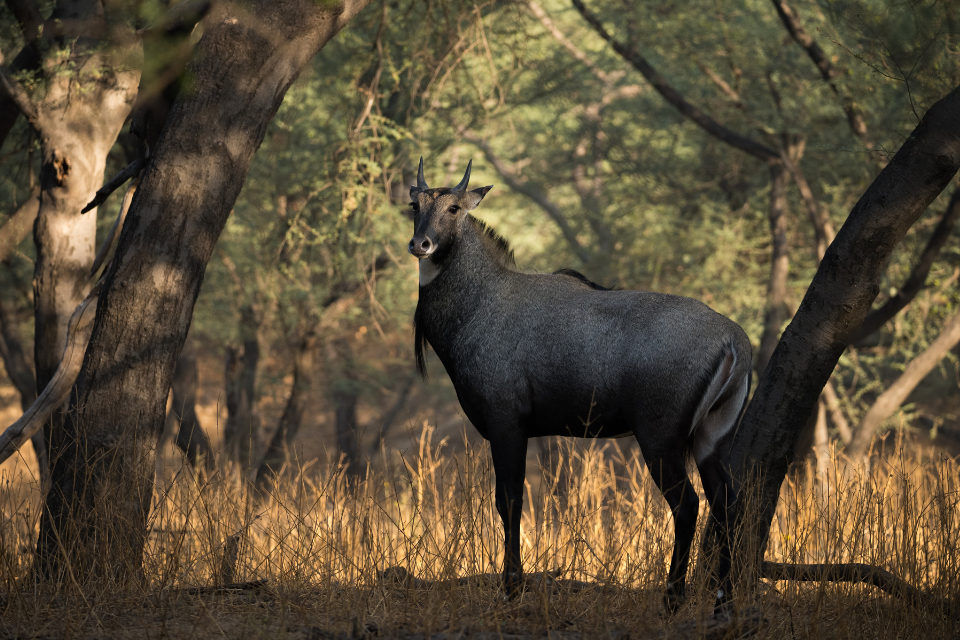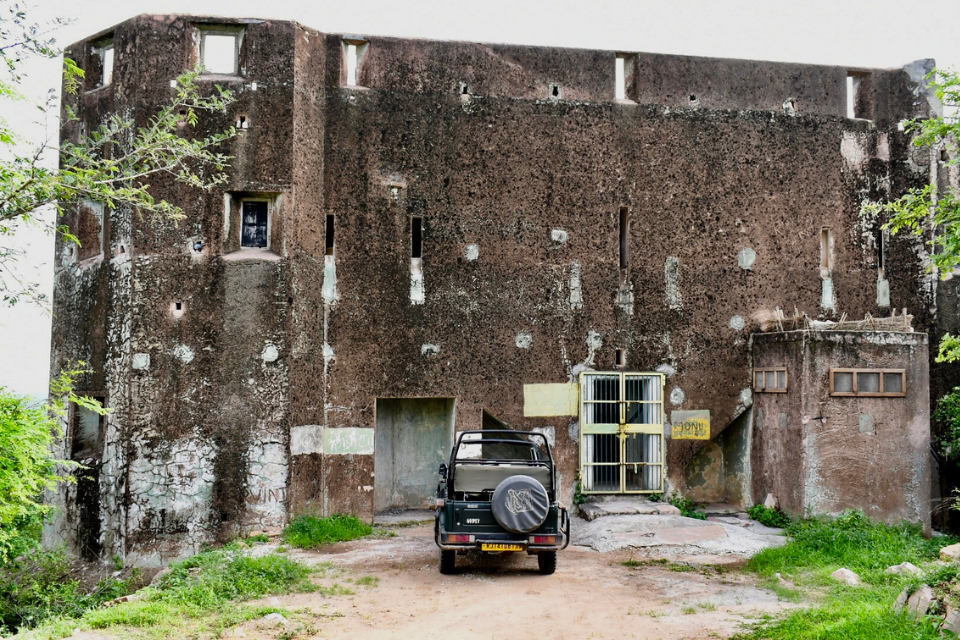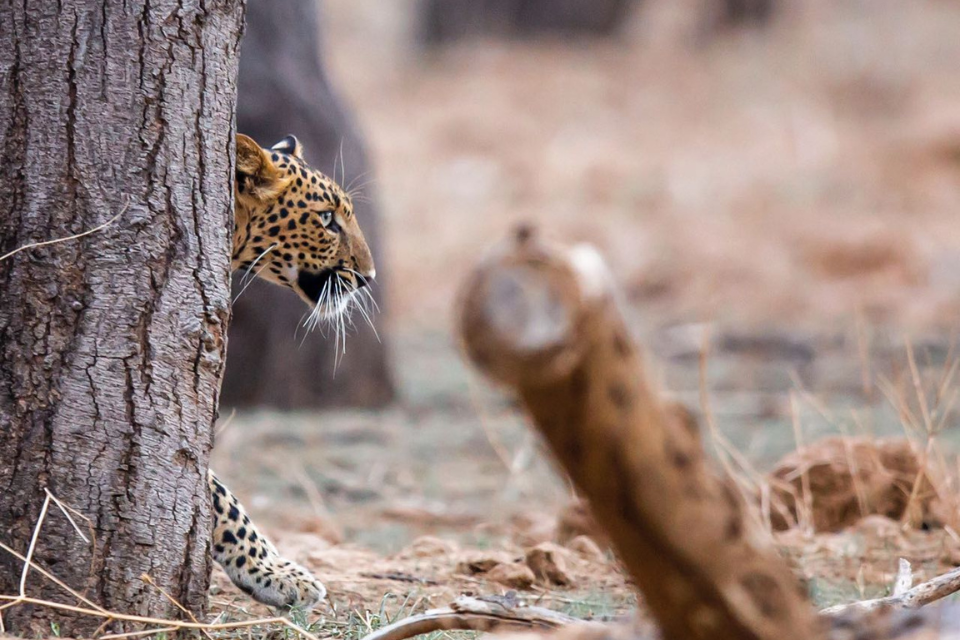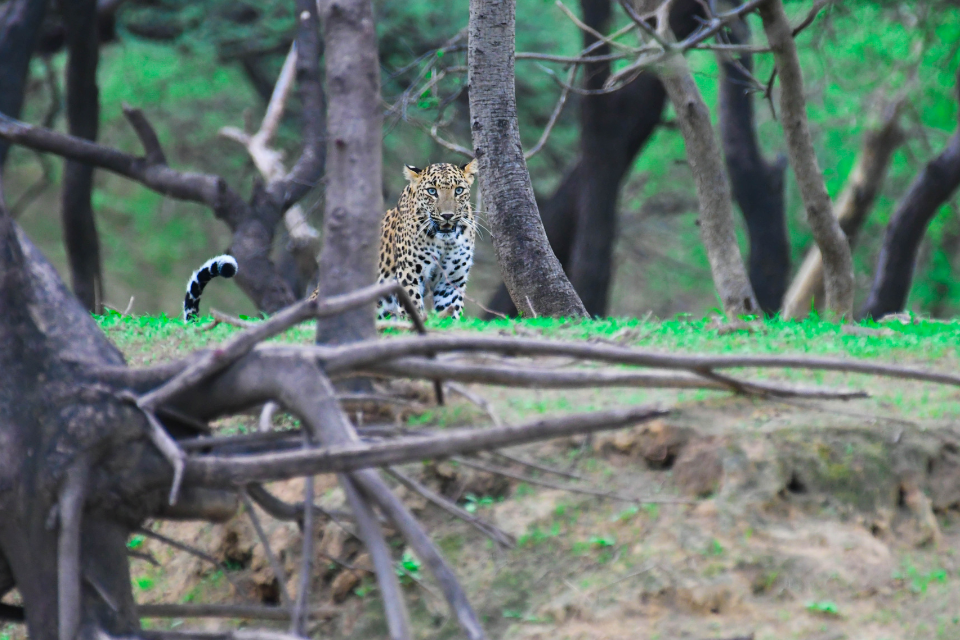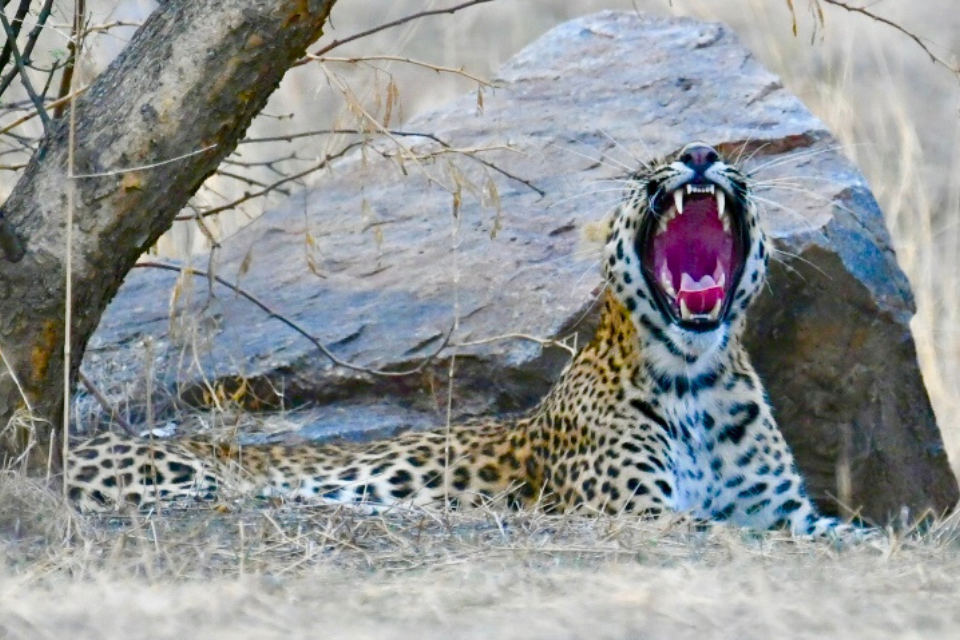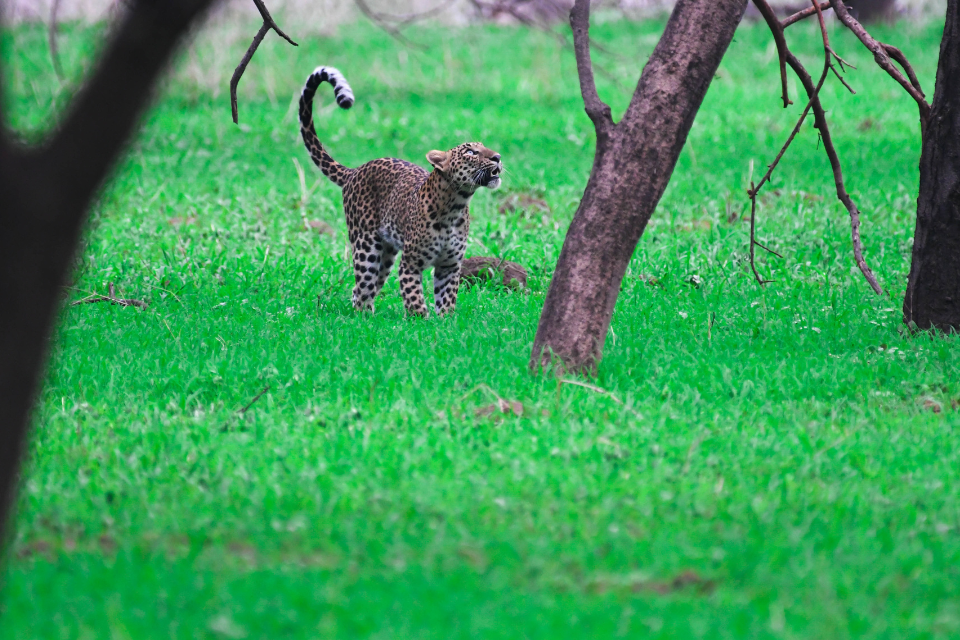- August 23, 2025
Striped Hyenas in Jaipur: A Quick Guide (Jhalana, Amagarh & Beed Papad)
Why this guide?
Leopards get the limelight in Jaipur—but the striped hyena (Hyaena hyaena) is the city’s most secretive star. Shy, mostly nocturnal, and surprisingly helpful to people (think: natural clean-up crew), striped hyenas slip through the same Aravalli folds as Jaipur’s big cats. This guide covers where you might encounter them (or their signs), how to look, and what to know so your visit stays respectful and safe. The species is globally Near Threatened on the IUCN Red List, so every ethical sighting—and even careful listening—matters.
Meet the striped hyena (the headline facts)
- Status: Near Threatened; populations generally decreasing across the range.
- Active hours: Crepuscular to nocturnal (peaks around dusk and pre-dawn). In camera-trap studies from Rajasthan’s agricultural landscapes, activity shows strong night peaks and very low daytime overlap with humans.
- Diet & role: Expert scavengers that also take small prey; multiple studies from semi-arid Rajasthan document a diet dominated by carrion/wild prey with some domestic remains—meaning they provide valuable waste-removal services near people.
- Communication: Famous for scent-marking (“pasting”)—dragging anal-gland secretions on vegetation and rocks. You won’t see it often from a vehicle, but you may pass pasting posts on trails your guide knows. (Pasting occurs in all hyaenids; chemistry studies show it’s a key social signal.)
- Behavior cues: When threatened, they can raise their mane to look larger—one of their most striking displays.
Where can you see striped hyenas around Jaipur?
1) Jhalana Leopard Reserve (SE Jaipur)
Jhalana’s scrub valleys, rocky ledges, and quiet drainage lines suit shy carnivores. While leopard sightings are the main draw, local operator pages list striped hyena among regular residents—confirming presence even if sightings are rare and mostly at first/last light. Treat any hyena sighting here as a bonus; more often you’ll find tracks, scat, or pasting posts.
2) Amagarh Leopard Reserve (near Galta Ji / Agra Road)
Amagarh’s species lists from local tourism pages also include striped hyena, and visitor anecdotes sometimes mention twilight sightings near water or along open, stony slopes. Expect crepuscular movement; daytime glimpses are uncommon. (Anecdotal reviews have reported hyena near a water reservoir; treat such reports as possibility, not promise.)
3) Beed Papad (Maila Bagh–Beed Papad, within Nahargarh Sanctuary)
Beed Papad—Jaipur’s newest leopard zone opened in 2025—sits inside Nahargarh Sanctuary, whose species lists include hyena among resident carnivores. The restored waterholes and low-vehicle design mean quiet evenings can deliver vocal cues or fresh tracks even when animals aren’t visible.
Bottom line: hyenas live across the Jaipur Aravalli belt. Sightings on regular day safaris are possible but rare; signs (tracks, scat) and evening vocalizations are more likely. Plan for patience.
When (and how) to look
Best windows:
- Pre-dawn and last light: Hyenas switch on when light is low and people are fewer. If your slot allows, spend the opening and closing minutes of a drive scanning open saddles and valley bottoms. Crepuscular peaks are well documented in camera-trap studies.
- Post-rain evenings: After monsoon showers, edge habitats come alive. Hyenas may skirt water edges or patrol open tracks for carrion—listen for jackal contact calls and watch for slow, level trots.
Where to wait:
- Saddles (low points between ridges) and broad drainage lines with soft soil—great for reading fresh pugmarks.
- Periphery water points with minimal vehicle pressure.
Quiet rock aprons with gentle slopes—hyenas prefer easy, energy-saving paths.
What to listen for:
- Low, cackling or whinny-like calls are rarely heard but possible on quiet nights; most drives will rely on silence and sign rather than sound.
How to read hyena sign (from a vehicle)
- Tracks (pugmarks):
- Four toes with non-retractile claws; the hind track is narrower than the front. Hyena pads can look dog-like—guides rely on pad shape/stride and context.
- Scat:
- Often pale/whitish due to bone content; crumbly when old. Don’t touch—your guide can assess freshness from texture/condition.
- Pasting posts:
- Small shrubs/grass clumps on trail edges bearing dark, tarry marks (not always obvious). These are communication hubs; your naturalist may point them out if visible.
Behavior 101: what to expect (and not expect)
- Solitary to loosely social: You’ll typically see one animal, sometimes a pair; large “clans” like spotted hyenas are not the norm for this species.
- Movement style: A steady, energy-saving trot on open ground; along edges rather than straight through dense thicket.
- Feeding: Carrion first, opportunistic small prey second; multiple Rajasthan studies confirm heavy scavenging with measurable ecosystem services (carcass clean-up that reduces disease risk).
- Display: If nervous, a striped hyena can raise its mane to appear larger before melting into cover. You’re unlikely to trigger this from a regulated gypsy, but it’s a classic behavior to know.
Why Jaipur is a good place to care about hyenas
Rajasthan’s semi-arid matrix lets hyenas coexist near people—especially where waste or carcasses accumulate. Camera-trap work in the state even found hyena detections closer to human settlement in some agricultural landscapes, likely due to easy food access (carcasses, dumps). That coexistence is fragile; it depends on tolerance, safe road crossings, and dog management (free-ranging dogs compete with/scavenge alongside hyenas and can escalate conflict).

Safety & ethics (for visitors and locals)
On safari (Jhalana / Amagarh / Beed Papad):
- No chasing or spotlighting. These are day safaris; respect schedules and routes.
- Engine off, whispers only at potential sightings; give animals space and an exit path.
- No baiting, no playback, no flash.
- Delay geotags on social posts—especially if you record den-like sites.
Near residential edges (general city advice):
- If you see a hyena near homes: go indoors, keep pets/food waste secured, and call local forest/helpline; do not crowd or approach.
- Waste discipline: secured garbage and carcass removal reduce risky interactions (which is better for hyenas and people). Evidence from Rajasthan shows hyenas are drawn to easy anthropogenic food.
Photography tips (without disturbing animals)
- Shutter first: for walking frames, start ~1/800–1/1000s; raise ISO instead of dragging shutter in low light.
- Pre-focus on entry lines: trails, saddle lips, and water edges—hyenas hug boundaries.
- Expose for highlights: wet coats + dark backgrounds fool meters; keep rosettes/hair texture (especially that mane) intact.
- Stay seated & stable: a small bean bag on the gypsy side rail beats hand-held wobble.
- Skip flash: it can startle; rely on higher ISO and clean technique.
Myths vs facts (fast debunks)
- “Hyenas are just dangerous scavengers.”
Mostly scavengers, yes—but shy, avoidant, and keystone cleaners in semi-arid city edges. Studies even estimate economic benefits from their waste-removal services. - “They’re active all day.”
No—crepuscular/nocturnal is the rule here; daytime overlap with human activity is minimal in Rajasthan studies.
“You’ll never see one in Jaipur.”
Sightings are possible (especially at dusk), but rare. Amagarh and Jhalana list the species; Nahargarh Sanctuary (which includes Beed Papad) also recognizes hyena presence. Manage expectations: look for signs first.
Trip-planning pointers (if hyena is your target)
- Aim for the edges of light. Prioritize the first 20 minutes and last 20 minutes of drives.
- Pick “quiet” micro-routes. Ask your naturalist for saddles, broad drainages, and less-visited waterholes (especially at Beed Papad).
- Accept “sign sightings.” A crisp pugmark string or fresh pasting post is a win on a hyena-focused ride.
- Stay flexible with weather. Post-rain windows can be golden; conversely, heavy showers may pause routes temporarily. (General safari ops in Jaipur continue year-round with weather caveats.)
FAQs
1) Are striped hyenas common in Jaipur’s safari zones?
They occur across the Aravalli belt (Jhalana, Amagarh, Nahargarh/Beed Papad), but they are secretive and mostly nocturnal. Expect signs more than daytime sightings; twilight is your best bet. Species lists and reports from operator/visitor pages back their presence.
2) What’s their conservation status?
Near Threatened on the IUCN Red List; global trend decreasing. Key threats include habitat loss, persecution/poisoning, road kills, and conflict tied to livestock/dogs.
3) Are they dangerous to people?
Hyenas in Jaipur are avoidant and mostly active at night. Problems arise around waste/dogs/livestock. Keep distance, secure garbage, and call authorities rather than approaching or chasing an animal. Studies from Rajasthan show hyenas often exploit human-provided food sources, which is why good waste practices matter.
4) What evidence supports “nocturnal with twilight peaks”?
Camera-trap data from Rajasthan agricultural landscapes report crepuscular-nocturnal activity with a bimodal night peak and minimal daytime movement.
5) How do I tell dog vs hyena tracks?
Hyena tracks can resemble dog tracks. Look at pad shape, toe alignment, and stride context; your guide can help. When in doubt, cross-check with scat (often whitish from bone) or surrounding pasting posts.
Disclaimer All images used in this blog are either sourced from public domain or credited to their respective owners. If you are the copyright holder of any image and wish to request its removal or proper attribution, please contact us at [email protected]



